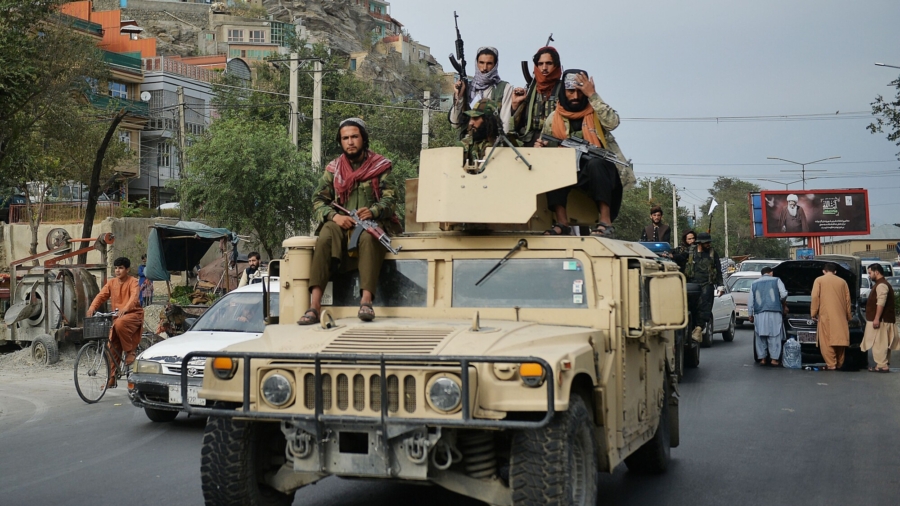Throughout the 20-year U.S. military mission in Afghanistan, the United States provided nearly $90 billion to the Afghan National Defense and Security Forces (ANDSF), including $18.6 billion to arm and equip the western-backed Afghan government. A new report by the Special Inspector General for Afghanistan Reconstruction (SIGAR) found that a significant amount of that equipment was left behind for the Taliban when the Afghan government collapsed.
The SIGAR report, released on Feb. 28, provided an updated assessment of the factors contributing to the collapse of the U.S.-backed Afghan government and the hasty effort to evacuate thousands of U.S. troops, civilians, and military equipment as the Taliban took control of the country.
The new SIGAR report marks a slight upward revision in the total value of military equipment left behind in Afghanistan. In August, a Department of Defense Inspector General (DoDIG) report estimated $7.12 billion in military equipment was left behind for the Taliban.
According to SIGAR, the $7.2 billion worth of abandoned equipment the United States gave the Afghan government included tactical aircraft, tactical ground vehicles, weapons and ammunition, and specialized equipment like night vision goggles and biometric devices. The Department of Defense had assessed that at least 78 aircraft worth $923.3 million, 9,524 air-to-ground weapons valued at $6.54 million, more than 40,000 vehicles, over 300,000 weapons, and nearly all night vision, surveillance, communications, and biometric equipment provided to the ANDSF were left behind when the last U.S. forces left the country.
“Taliban units now patrol in pickup trucks and armored vehicles likely procured by the U.S. and provided to the ANDSF,” the SIGAR report reads. “Taliban special operations troops, known as Badri 313 units, wear helmets with night vision mounts likely provided by the United States, and carry U.S.-provided M4 rifles equipped with advanced gunsights.”
Efforts to Remove or Destroy Military Equipment
The new SIGAR report also provides more accounting of the efforts to remove or destroy equipment and the extent to which the actions succeeded.
U.S. forces managing the final withdrawal and civilian evacuation from Afghanistan attempted to remove, disable, or destroy some of the most valuable equipment. The SIGAR report said U.S. forces destroyed 78 manned aircraft, six drone aircraft and a drone ground control station, 57 tactical ground vehicles, six automated air defense guns, and four air defense radar systems that they could not remove from Afghanistan before they left. According to the SIGAR report, most aircraft weapons left behind in Afghanistan were “non-precision munitions,” and aircraft capable of using precision munitions were rendered “non-operational” or destroyed during the withdrawal.
An unnamed U.S. Marine Corps infantry officer shared some concerns with SIGAR investigators about how effectively U.S. forces had disabled or destroyed critical equipment before they left.
“There was mixed direction on whether we should destroy or make vehicles inoperable. Some guys were told to and then stopped; other guys [were] told not to. Some Marines went around on their own, trying to make them so you couldn’t use them,” the Marine officer told investigators. ” … All the stuff I think we left behind I think could be fixed and used eventually.”
The August DoDIG report said the U.S. military “removed or destroyed nearly all major equipment used by U.S. troops in Afghanistan” during a broader withdrawal process that spanned months. The report said the condition of the U.S.-funded equipment left behind in Afghan government inventory at the withdrawal was “unknown,” and “the long-term operability of the vehicles was likely to deteriorate without U.S. contractor maintenance.”
SIGAR specifically assessed that “the operational condition of $5.7 billion worth of abandoned weapons, ground vehicles, communications equipment, and specialized equipment, including night vision, surveillance, biometric, and positioning equipment is unknown.”
SIGAR said the Taliban have also demonstrated some capacity to use more advanced U.S.-provided equipment, such as operating Mi-17 helicopters. The report cited one Taliban leader who claimed they had repaired half of the U.S. force’s “demilitarized” aircraft during their final Afghan withdrawal. At the same time, another official suggested the Taliban had only brought six Black Hawks back to operational capability.

